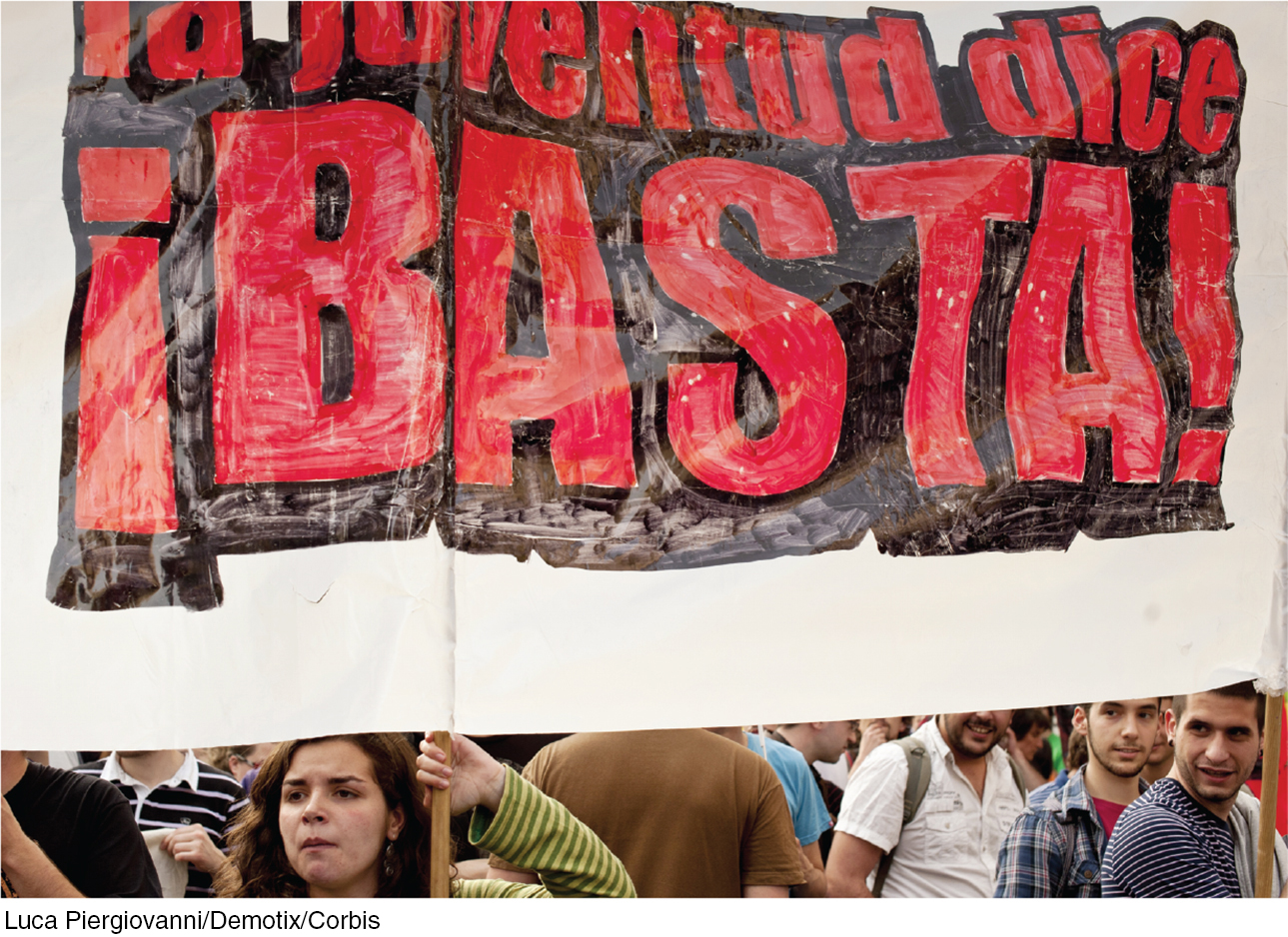Chapter Introduction
Macroeconomics: The Big Picture
CHAPTER 12
![]() THE PAIN IN SPAIN
THE PAIN IN SPAIN

What You Will Learn in This Chapter
What makes macroeconomics different from microeconomics
What a business cycle is and why policy makers seek to diminish the severity of business cycles
How long-
run economic growth determines a country’s standard of livingThe meaning of inflation and deflation and why price stability is preferred
The importance of open-
economy macroeconomics and how economies interact through trade deficits and trade surpluses
 | interactive activity
| interactive activity
IN 2012 JAVIER DIAZ, A 25-
Was this lack of job prospects a reflection on Mr. Diaz’s qualifications? Probably not. No matter who you were, finding a job in Spain in the year 2012 was tough indeed. Of Spaniards under the age of 25 seeking work, 57%—that’s right, 57%—were unemployed. Having a college degree didn’t help much: the unemployment rate among recent college graduates was 39%.
Yet it wasn’t always like that. Five years earlier Mr. Diaz probably would have found it fairly easy to get a job that made use of his education. In 2007–2008, however, much of the world economy, the United States included, plunged into a severe slump. The United States and some other countries began recovering from the slump in 2009, although the recovery was slow and painful. But as of 2012 Spain and a number of other European countries hadn’t recovered at all—
As bad as things were for the global economy after 2007, they could have been much worse. In fact, they were much worse during an epic global slump that began in 1929 and persisted until the beginning of World War II. It was a time of severe economic troubles known as the Great Depression. To emphasize that the troubles were the worst since the Great Depression, economists refer to the downturn that began in 2007 as the Great Recession.
Why wasn’t the slump after 2007 as bad as the slump after 1929? There were many reasons, but one stands out: economists learned something about what to do from the earlier catastrophe. When the Great Depression struck, political leaders and their economic advisers literally had no idea what to do. Fortunately, during the Great Recession they did know what needed to be done, although not all of the good advice on offer was taken.
At the time of the Great Depression, microeconomics, which is concerned with the consumption and production decisions of individual consumers and producers and with the allocation of scarce resources among industries, was already a well-
What happened to much of the world during the Great Depression and during the Great Recession—
Macroeconomics came into its own as a branch of economics during the Great Depression. Economists realized that they needed to understand the nature of the catastrophe that had overtaken the United States and much of the rest of the world in order to extricate themselves, as well as to learn how to avoid such catastrophes in the future. To this day, the effort to understand economic slumps and find ways to prevent them is at the core of macroeconomics. Over time, however, macroeconomics has broadened its reach to encompass a number of other subjects, such as long-
This chapter offers an overview of macroeconomics. We start with a general description of the difference between macroeconomics and microeconomics, then briefly describe some of the field’s major concerns.